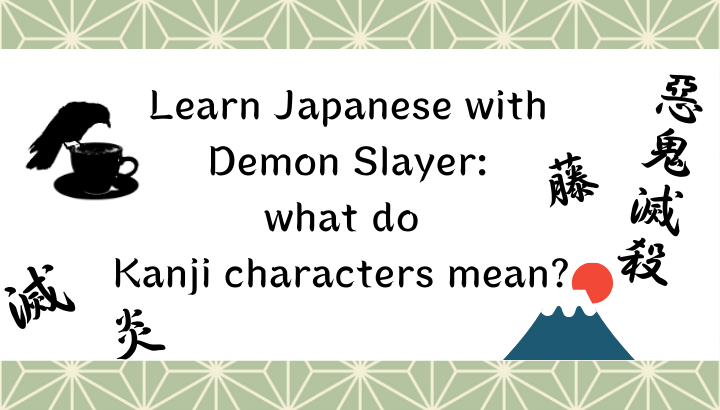When you watch the anime Demon Slayer: Kimetsu no Yaiba, you sometimes see Japanese characters and you might wonder what the characters mean. This article explains the meanings of Kanji characters which appear in Demon Slayer.
>are learning Japanese language or interested in Kanji characters.
>want to know the meanings of Japanese characters which appear in the anime Demon Slayer.
鬼滅の刃 (Title)
ki metsu no yaiba
鬼 滅 の 刃
Needless to say, this is the title of work “Demon Slayer” and what you see in the Japanese version of the logo.
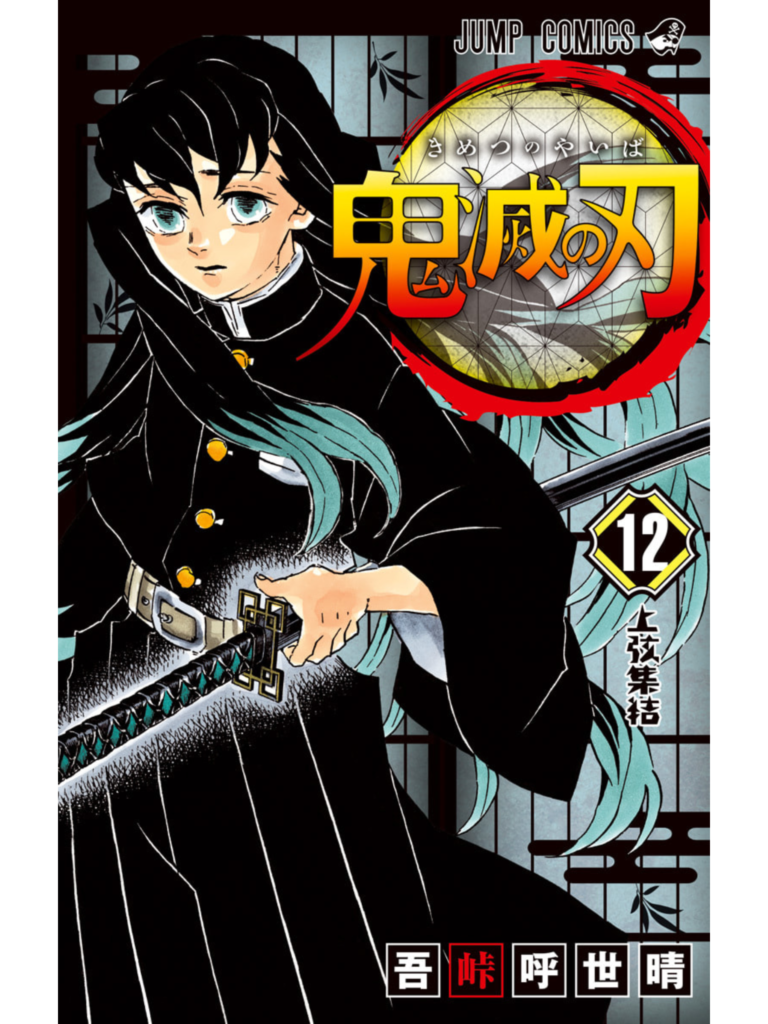
by Koyoharu Gotouge (SHUEISHA)
Let’s explain one by one:
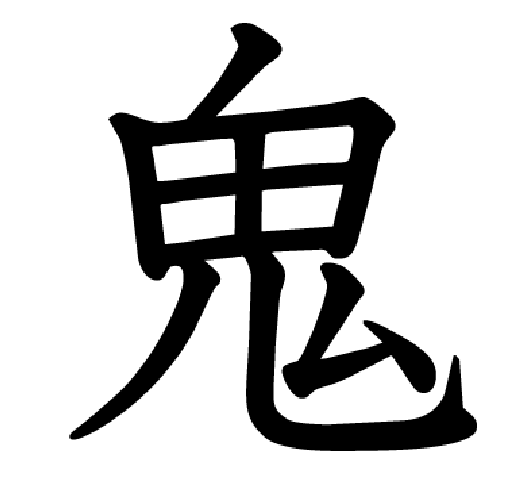
- Pronunciation: ki, oni
- Meaning: demon
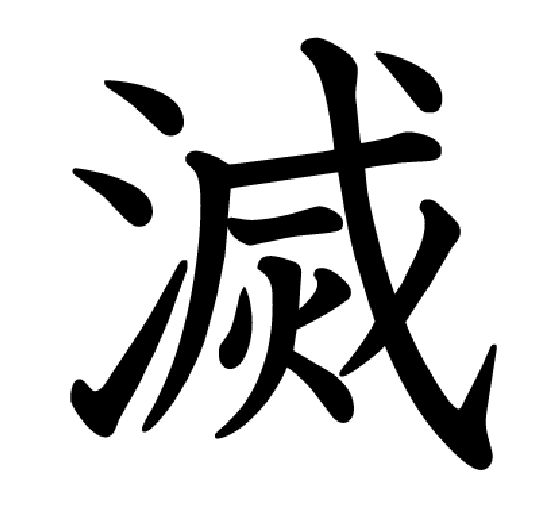
- Pronunciation: metsu
- Meaning: destroy, annihilate, eliminate
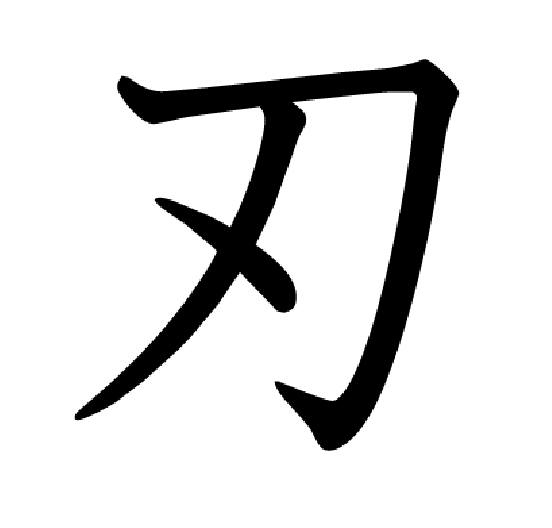
- Pronunciation: yaiba, jin
- Meaning: blade
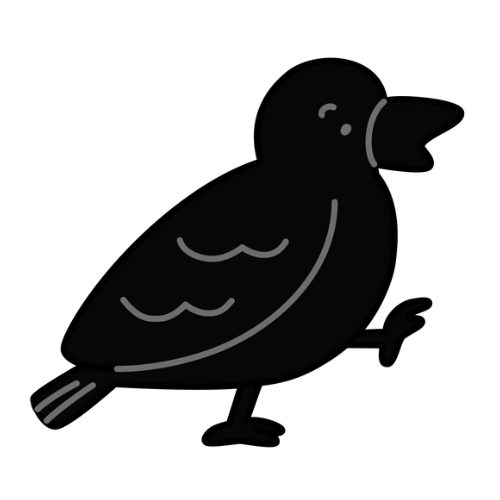
The character “の” between “滅” and “刃” is Hiragana which is phonetic lettering instead of Kanji, and in this case it means ‘s.
“鬼滅の刃” together means “demon destroying blade”. It is translated into English as “Demon Slayer“, probably to make it simple, cool or easy to understand.
悪鬼滅殺 (on Hashira’s Nichirin Blades)
akki messatsu
惡 鬼 滅 殺
These four characters are engraved on Nichirin Blades of Hashira near the handguard. It first appears in Episode 1 of the anime Demon Slayer, when Giyu Tomioka came to save Tanjiro.
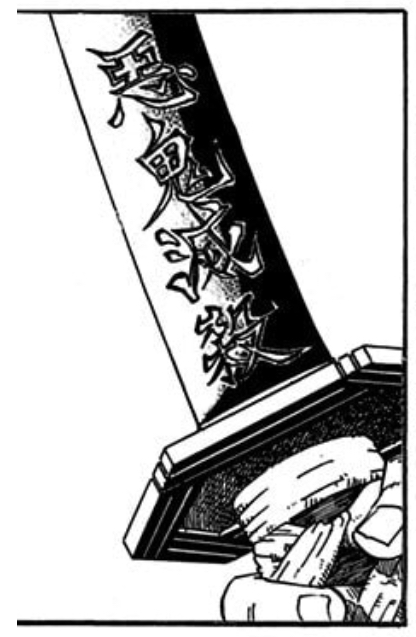
by Koyoharu Gotouge (SHUEISHA)
Let’s explain one by one:
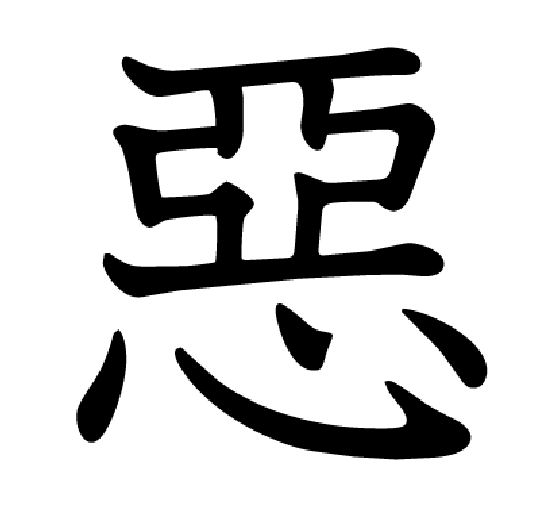
- Pronunciation: aku
- Meaning: bad, evil

Those who learn Japanese might have thought that it looked a bit different from “悪“. You have good eyes! “惡“ is the old style of “悪“ and the meaning is same. Gotouge sensei used the old style of Kanji, probably because it is the story of the Taisho era.
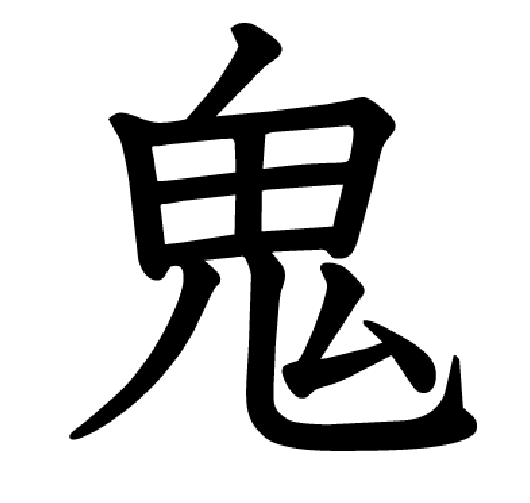
- Pronunciation: ki, oni
- Meaning: demon
- Remark: same as in Demon Slayer logo
“惡鬼” is one word and pronounced as “akki” instead of “akuki”. It is a simplified pronunciation which frequently occurs in Japanese language. “Akuki” is a bit difficult to say, so we skip the pronunciation of “u”.

- Pronunciation: metsu
- Meaning: destroy, annihilate
- Remark: same as in Demon Slayer logo
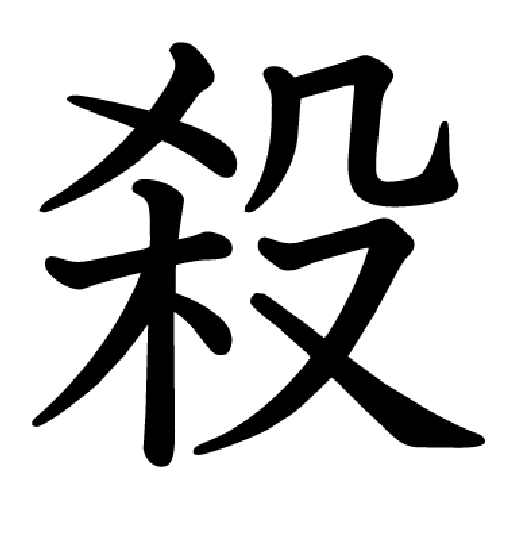
- Pronunciation: satsu
- Meaning: kill
“滅殺” is one word and pronounced as “messatsu” instead of “metsusatsu”. It is also a simplified pronunciation. “Metsusatsu” is a bit difficult to say, so we pronounce it as “messatsu”.
“惡鬼滅殺” together means “kill and annihilate evil demons”. A strong will of the Demon Slayer Corps to destroy the demons is engraved on Hashira’s blades.
滅 (on the rear side of Demon Slayer’s uniform)
metsu
滅
We see this Kanji character on the rear side of the Demon Slayers’ uniform.
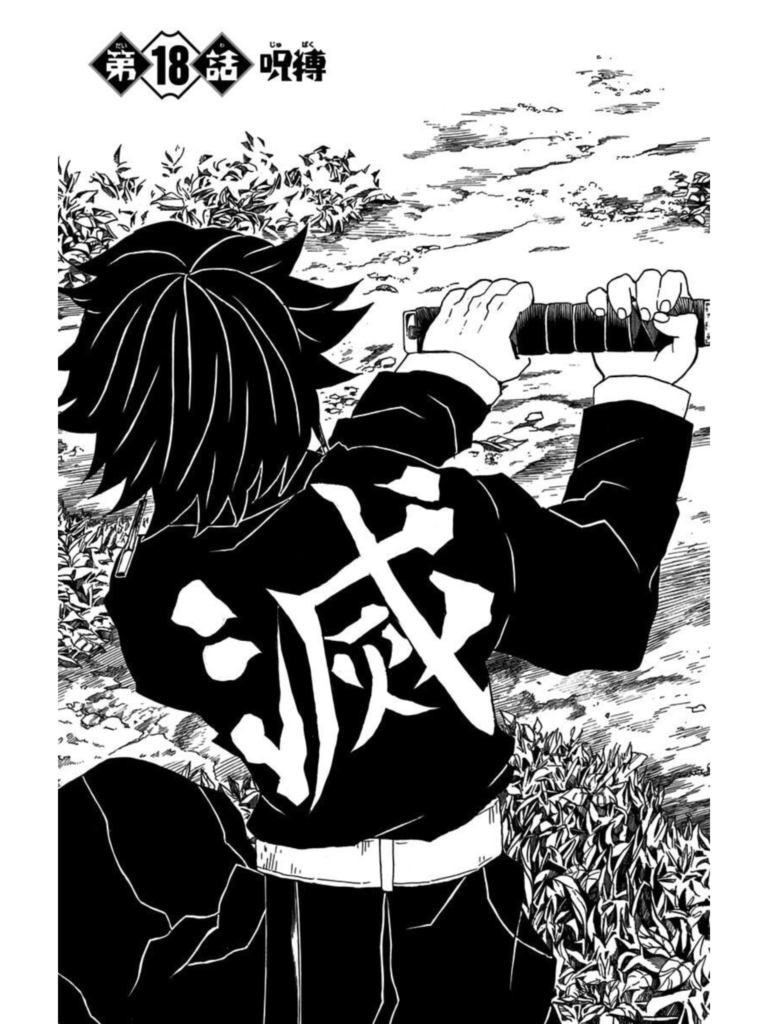
Demon Slayer: Kimetsu no Yaiba, Comic Vol.3, Chapter 18
by Koyoharu Gotouge (SHUEISHA)
You already know it as it was explained in the previous sections, but once again:
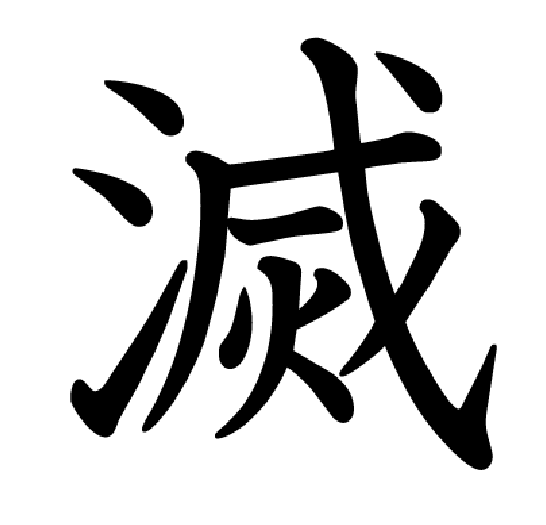
- Pronunciation: metsu
- Meaning: destroy, annihilate
藤 (on the door of the house of wisteria family crest)
fuji
藤
This Kanji is written on the wisteria family crest. Families with the wisteria crest were rescued by demon slayers in the past and they volunteer to serve demon slayers when needed.

by Koyoharu Gotouge (SHUEISHA)
Tanjiro visits families with the wisteria crest twice:
- Kasugai Crow takes Tanjiro, Zenitsu and Inosuke to a family with the wisteria crest for a break after the mission in the Drum House. (Episode 14, Tanjiro Kamado Unwavering Resolve Arc).
- The Sound Hashira Tengen Uzui takes Tanjiro, Zenitsu and Inosuke to a family with the wisteria crest to disguise them as women before entering the Entertainment District (Episode 2, Entertainment District Arc).
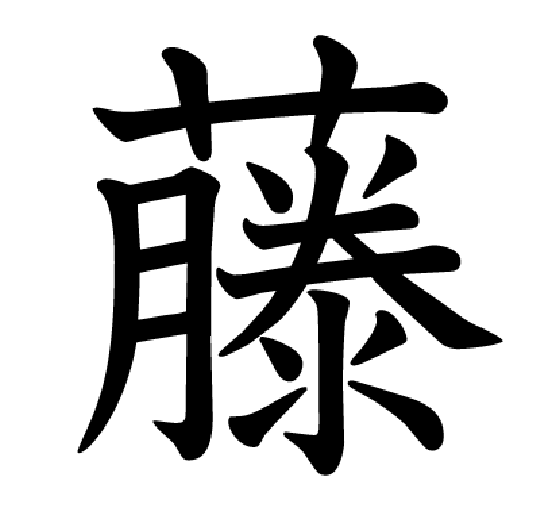
- Pronunciation: fuji
- Meaning: wisteria

By the way, for Mt. Fuji we use different characters “富士”.
炎 (when Tanjiro’s father dances Kagura)
honō
炎
Tanjiro recalls his father dancing Kagura (神楽) in the New Year. Tanjiro’s mother Kie says:
He is working with the flames (as a charcoal burner), so to make sure he avoids catastrophe or injury, we offer a dance to the God of Fire HINOKAMI at the beginning of the year and pray to him.
Demon Slayer: Kimetsu no Yaiba, Comic 5, Chapter 40
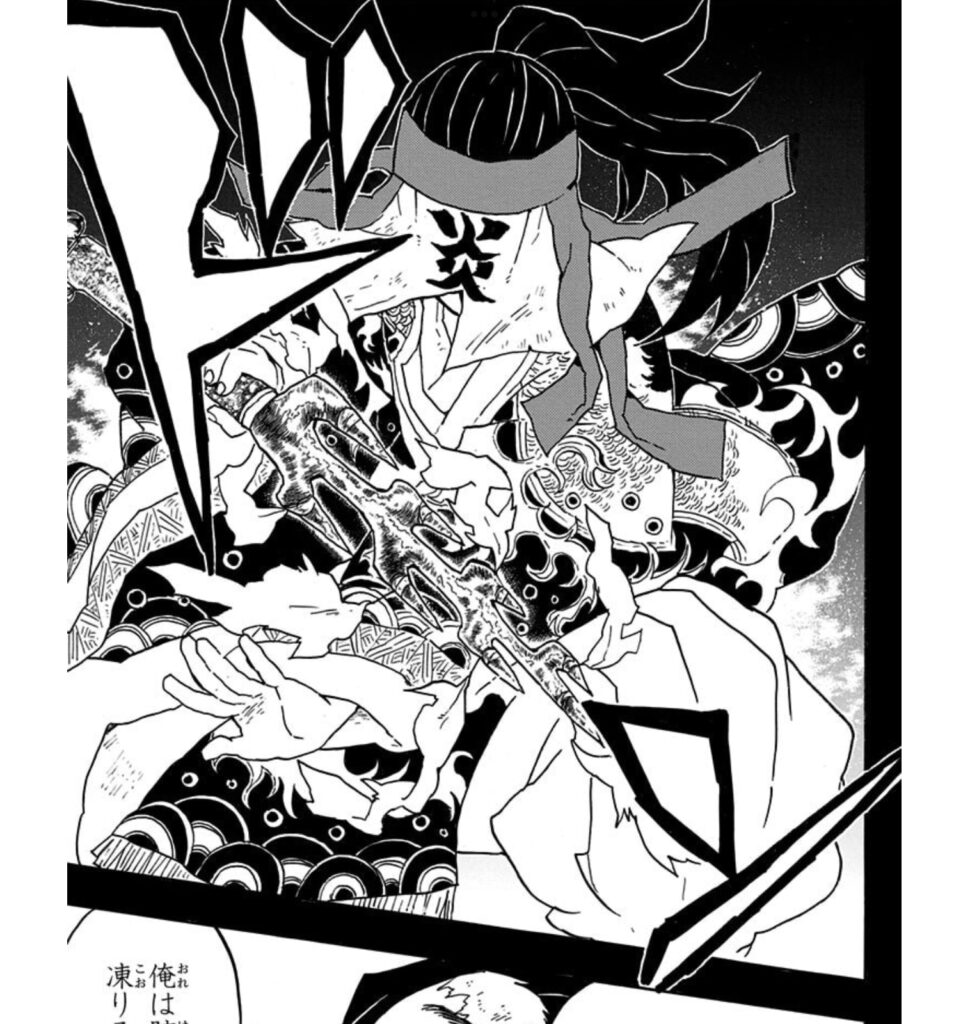
Demon Slayer: Kimetsu no Yaiba, Comic 5, Chapter 40
by Koyoharu Gotouge (SHUEISHA)
Tanjiro’s father Tanjuro has a cloth with the character of “炎” in front of his face.
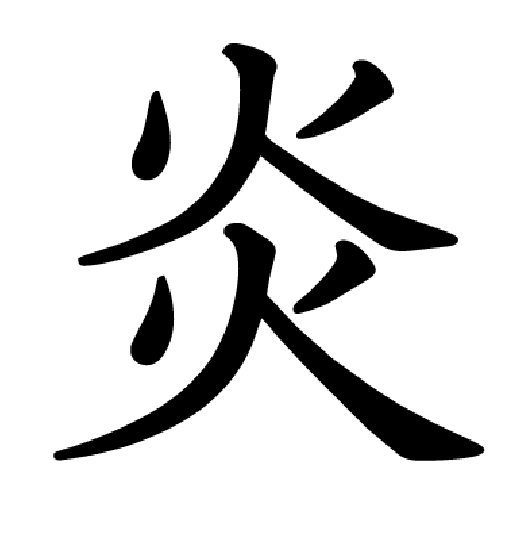
- Pronunciation: hono, homura, en
- Meaning: flame

For the Flame Breathing or Flame Hashira we use the same character “炎”. The theme song of the Movie Mugen Train is written as “炎” and pronounced as “Homura” in this case.
殺 (The Wind Hashira Sanemi Shinazugawa)
satsu
殺
This Kanji character is written on the rear side of the jacket of the Wind Hashira Sanemi Shirazugawa, elder brother of Genya Shinazugawa.
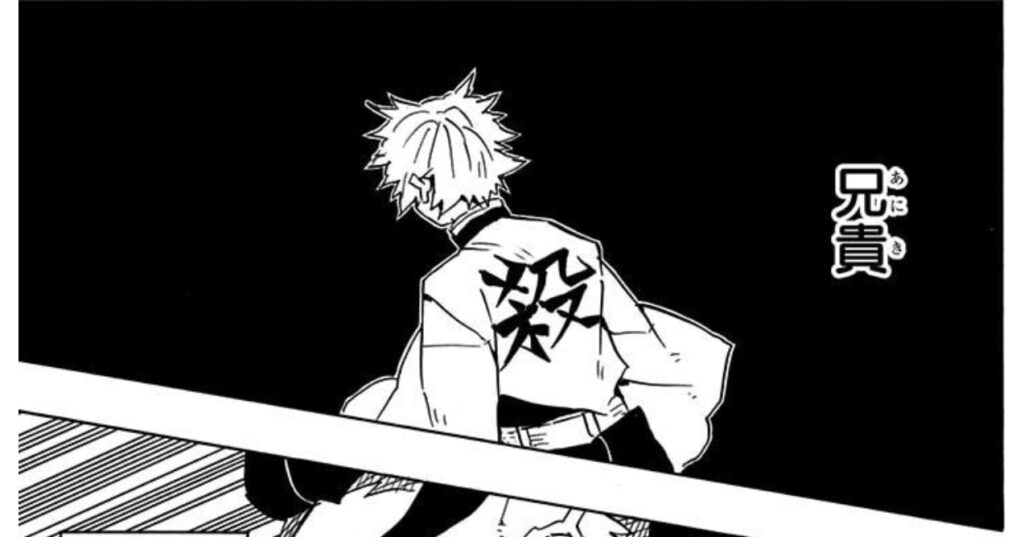
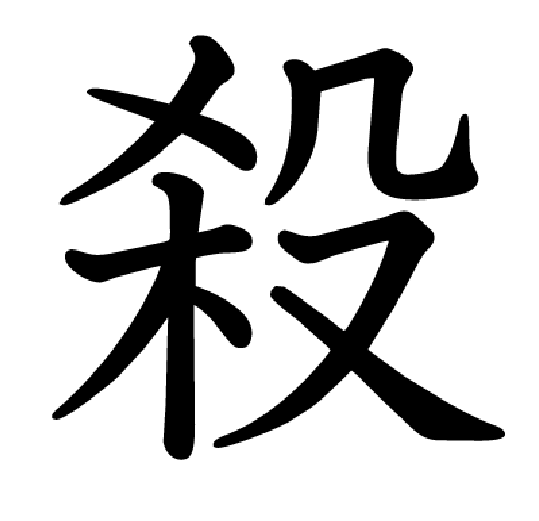
- Pronunciation: satsu
- Meaning: kill
On the rear side of Demon Slayer’s uniform there is a character of “滅”. Together with “殺” it makes the word “滅殺 (messatsu)”, the last two characters on Hashira’s Nichirin blades meaning kill and annihilate. The strong will of the Wind Hashira Sanemi Shinazugawa to destroy the demons can be seen.
Shinazugawa brothers have a shadowy past. Their mother was turned into a demon and attacked her own children. Sanemi caught her and took her out of the house to protect his smaller brothers and sisters, not knowing in the darkness that it was his mother. Sanemi fought against his mother who he thought was something else and when the sun rose, he realized that he had killed her mother. In panic Genya shouted “Murderer” against Sanemi.

Since then, Sanemi doesn’t talk to Genya. Genya feels guilty about what he said against Sanemi and wants to apologize him. Will they make up?
南無阿弥陀仏 (The Rock Hashira Gyomei Himejima)
namu amidabutsu
南無阿弥陀仏
Some people might wonder what is written on the clothes of the Rock Hashira Gyomei Himejima.
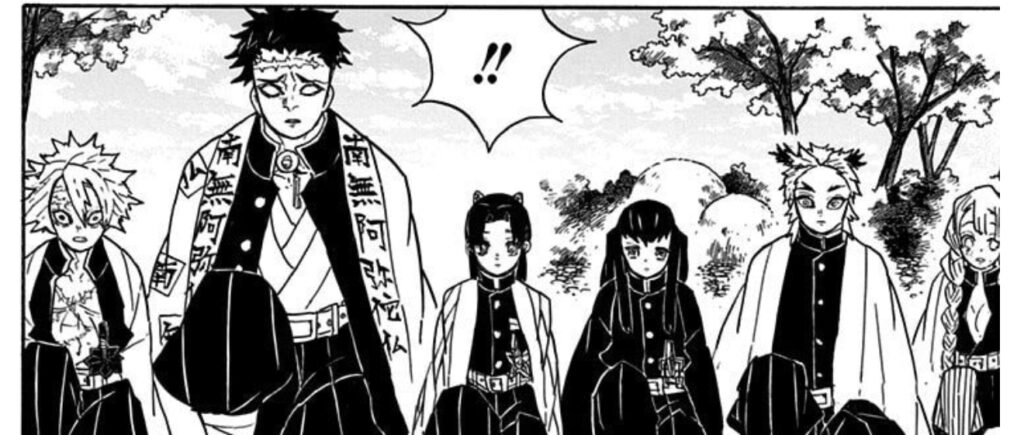
“南無阿弥陀仏 (namu amidabutsu)” makes one sentence and it is one of the Buddhist sutras. Buddhism comes from India, so the word is a transformation from Sanskrit “Namo Amitāyuṣe Buddhāya“, meaning “I believe in the infinite life Buddha”.

